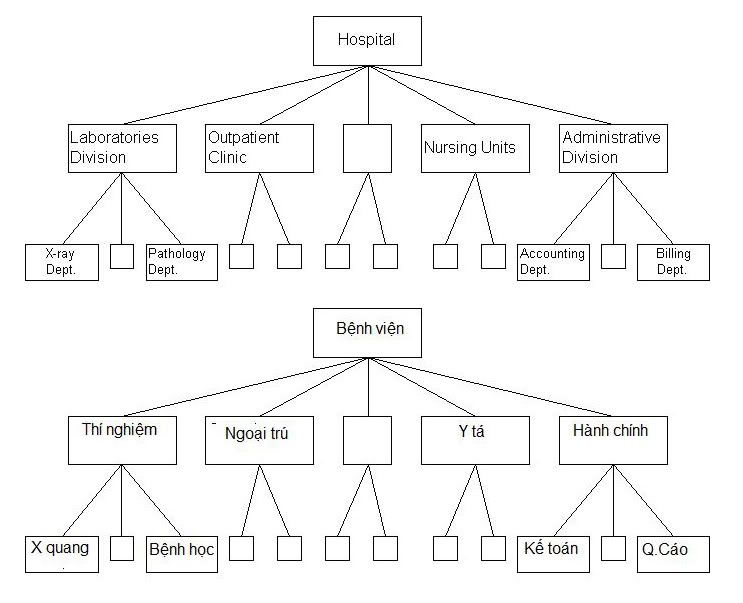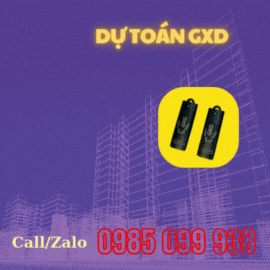S
Skinhead
Guest
3.1 Design and Construction as an Integrated System
In the planning of facilities, it is important to recognize the close relationship between design and construction. These processes can best be viewed as an integrated system. Broadly speaking, design is a process of creating the description of a new facility, usually represented by detailed plans and specifications; construction planning is a process of identifying activities and resources required to make the design a physical reality. Hence, construction is the implementation of a design envisioned by architects and engineers. In both design and construction, numerous operational tasks must be performed with a variety of precedence and other relationships among the different tasks.
Several characteristics are unique to the planning of constructed facilities and should be kept in mind even at the very early stage of the project life cycle. These include the following:
• Nearly every facility is custom designed and constructed, and often requires a long time to complete.
• Both the design and construction of a facility must satisfy the conditions peculiar to a specific site.
• Because each project is site specific, its execution is influenced by natural, social and other locational conditions such as weather, labor supply, local building codes, etc.
• Since the service life of a facility is long, the anticipation of future requirements is inherently difficult.
• Because of technological complexity and market demands, changes of design plans during construction are not uncommon.
Chương III – Quá trình thiết kế và thi công
3.1. Thiết kế và thi công là một hệ thống hợp nhất
Trong công tác lập kế hoạch cho các công trình,việc nhận thức được mối quan hệ mật thiết giữa thiết kế và thi công là điều rất quan trọng. Các quá trình này tốt nhất là có thể được xem là một hệ thống hợp nhất. Nói rộng ra, thiết kế là một quá trình tạo ra sự mô tả một công trình mới, thường được thể hiện bằng các kế hoạch và đặc tính kỹ thuật chi tiết; lập kế hoạch thi công là một quá trình xác định các hoạt động và nguồn lực cần thiết để đưa thiết kế trở thành hiện thực
Do đó, thi công là việc thực hiện một thiết kế do các kiến trúc sư và kỹ sư hình dung ra. Trong cả thiết kế và thi công, rất nhiều nhiệm vụ phải được thực hiện với sự ưu tiên cũng như với các mối liên hệ giữa các nhiệm vụ với nhau.
Có rất nhiều đặc trưng là đặc thù đối với quá trình lập kế hoạch cho các công trình xây dựng và cần phải được quan tâm thậm chí ngay từ giai đoạn đầu của vòng đời dự án. Các đặc tính này bao gồm:
- Hầu như mỗi công trình đều được thiết kế và thi công với đặc thù, và thường đòi hỏi thời gian dài để hòan thành.
- Cả việc thiết kế và thi công của một công trình đều phải đáp ứng các điều kiện đặc thù với một địa điểm cụ thể,
- Do mỗi dự án đều có một địa điểm riêng, việc thực hiện nó sẽ bị ảnh hưởng bởi các điều kiện về tự nhiên, xã hội và các điều kiện khu vực khác như thời tiết, cung cấp nhân lực, quy phạm xây dựng của vùng…
- Do tuổi thọ công trình dài nên việc tiên liệu các yêu cầu trong tương lai là rất khó.
- Do tính phức tạp về kỹ thuật và nhu cầu của thị trường, các thay đổi về bản vẽ thiết kế trong quá trình thi công không phải là không thường xảy ra.
In an integrated system, the planning for both design and construction can proceed almost simultaneously, examining various alternatives which are desirable from both viewpoints and thus eliminating the necessity of extensive revisions under the guise of value engineering. Furthermore, the review of designs with regard to their constructibility can be carried out as the project progresses from planning to design. For example, if the sequence of assembly of a structure and the critical loadings on the partially assembled structure during construction are carefully considered as a part of the overall structural design, the impacts of the design on construction falsework and on assembly details can be anticipated. However, if the design professionals are expected to assume such responsibilities, they must be rewarded for sharing the risks as well as for undertaking these additional tasks. Similarly, when construction contractors are expected to take over the responsibilities of engineers, such as devising a very elaborate scheme to erect an unconventional structure, they too must be rewarded accordingly. As long as the owner does not assume the responsibility for resolving this risk-reward dilemma, the concept of a truly integrated system for design and construction cannot be realized.
Trong một hệ thống hợp nhất, kế hoạch thiết kế và thi công có thể được tiến hành gần như cùng lúc, khảo sát các khả năng khác nhau là cần thiết từ cả hai góc độ và vì thế loại bớt tình trạng chỉnh sửa kéo dài dưới hình thức giá trị lắp dựng. Hơn nữa, việc xem xét các bản thiết kế liên quan đến quá trình xây dựng chúng có thể được tiến hành như những quá trình của dự án từ kế hoạch đến thiết kế. Chẳng hạn, nếu chuỗi dây chuyền của một cấu trúc và tải trọng tới hạn trên cấu trúc lắp ráp từng phần trong quá trình xây dựng được xem xét một cách cẩn thận như một phần của thiết kế cấu trúc tổng thể, các tác động của thiết kế lên cốp pha và lên các chi tiết lắp ráp có thể được lường trước. Tuy nhiên, nếu các chuyên gia thiết kế phải chịu trách nhiệm về việc này, họ phải được thưởng vì đã cùng gánh chịu rủi ro cũng như là đảm nhận những công việc phát sinh này. Tương tự, khi các nhà thầu lãnh trách nhiệm của các kỹ sư, cũng như là việc đặt ra một kế hoạch rất tỷ mỉ để dựng lên một cấu trúc bất thường, họ cũng phải được thưởng như thế. Chừng nào mà chủ đầu tư không chịu trách nhiệm giải quyết vấn đề rủi ro - phần thưởng, khái niệm về một hệ thống hợp nhất thực sự giữa thiết kế và thi công sẽ không thành hiện thực.
It is interesting to note that European owners are generally more open to new technologies and to share risks with designers and contractors. In particular, they are more willing to accept responsibilities for the unforeseen subsurface conditions in geotechnical engineering. Consequently, the designers and contractors are also more willing to introduce new techniques in order to reduce the time and cost of construction. In European practice, owners typically present contractors with a conceptual design, and contractors prepare detailed designs, which are checked by the owner's engineers. Those detailed designs may be alternate designs, and specialty contractors may also prepare detailed alternate designs.
Một chú ý thú vị là các chủ đầu tư Châu âu thường có thái độ mở hơn với công nghệ và cùng gánh chịu rủi ro với tư vấn và nhà thầu. Cụ thể, họ thường sẵn sàng chịu trách nhiệm hơn đối với các trạng thái ngầm không đoán biết trước được trong kỹ thuật địa chất. Kết quả là, các nhà tư vấn thiết kế và nhà thầu cũng sẵn sàng đưa ra các kỹ thuật mới hơn nhằm giảm thời gian và chi phí xây dựng. Trong môi trường hành nghề ở Châu âu, các chủ đầu tư thường giới thiệu các nhà thầu với bản thiết kế sơ bộ, và các nhà thầu sẽ chuẩn bị các bản vẽ chi tiết được kiểm tra bởi các kỹ sư của chủ đầu tư. Những thiết kế chi tiết này có thể là các bản thiết kế luân phiên, và các nhà thầu chuyên môn cũng có thể chuẩn bị các bản vẽ luân phiên chi tiết.
Responsibility for Shop Drawings
The willingness to assume responsibilities does not come easily from any party in the current litigious climate of the construction industry in the United States. On the other hand, if owner, architect, engineer, contractor and other groups that represent parts of the industry do not jointly fix the responsibilities of various tasks to appropriate parties, the standards of practice will eventually be set by court decisions. In an attempt to provide a guide to the entire spectrum of participants in a construction project, the American Society of Civil Engineers issued a Manual of Professional Practice entitled Quality in the Constructed Project in 1990. This manual is intended to help bring a turn around of the fragmentation of activities in the design and construction process.
Ví dụ 3-1: Trách nhiệm thực hiện bản vẽ thi công Shop Drawings
Thiện chí chịu trách nhiệm không phải là dễ dàng đối với bất kỳ đối tác nào trong một môi trường của ngành xây dựng hay kiện tụng như ở Mỹ. Mặt khác, nếu chủ đầu tư, kiến trúc sư, kỹ sư, nhà thầu và các nhóm khác đại diện cho các thành phần của ngành mà không cùng nhau quy định trách nhiệm của các nhiệm vụ khác nhau cho các bên thích hợp, thì rốt cuộc theo thông lệ trách nhiệm sẽ được quy kết theo quyết định của toà án. Nhằm mục đích cung cấp một hướng dẫn cho toàn bộ các bên tham gia trong một dự án xây dựng, Hiệp hội kỹ sư dân dụng Hoa kỳ đã xuất bản cuốn Sổ tay thực hành chuyên nghiệp với tên gọi Chất lượng trong các dự án đã xây dựng vào năm 1990. Cuốn sổ tay này nhằm giúp mang lại một sự thay đổi triệt để của phân đoạn các công tác trong quá trình thiết kế và xây dựng.
Shop drawings represent the assembly details for erecting a structure which should reflect the intent and rationale of the original structural design. They are prepared by the construction contractor and reviewed by the design professional. However, since the responsibility for preparing shop drawings was traditionally assigned to construction contractors, design professionals took the view that the review process was advisory and assumed no responsibility for their accuracy. This justification was ruled unacceptable by a court in connection with the walkway failure at the Hyatt Hotel in Kansas City in 1985. In preparing the ASCE Manual of Professional Practice for Quality in the Constructed Project, the responsibilities for preparation of shop drawings proved to be the most difficult to develop. [1] The reason for this situation is not difficult to fathom since the responsibilities for the task are diffused, and all parties must agree to the new responsibilities assigned to each in the recommended risk-reward relations shown in Table 3-1.
Các bản vẽ thi công tại công trường thể hiện các chi tiết lắp ráp để dựng lên một cấu trúc phản ánh ý định và nhân tố căn bản của thiết kế cấu trúc ban đầu. Chúng được chuẩn bị bởi nhà thầu xây dựng và được chuyên gia thiết kế xét duyệt. Tuy nhiên, vì trách nhiệm chuẩn bị các bản vẽ thi công shop drawing theo thông lệ là của các nhà thầu xây dựng, các chuyên gia thiết kế tiến hành xét duyệt mà quá trình xét duyệt này là tư vấn và không chịu trách nhiệm về tính chính xác của họ. Lý lẽ này đã bị toà án phán xét là không thể chấp nhận được liên quan đến sai phạm tại đường dạo trong Khách sạn Hyatt ở Kansas City năm 1985. Quá trình chuẩn bị cho cuốn Sổ tay Thực hành chuyên nghiệp trong cuốn Chất lượng trong các Dự án đã xây dựng đã cho thấy trách nhiệm tiến hành thực hiện bản vẽ thi công shop drawing là phần khó triển khai nhất. Lý do là không khó để thăm dò vì những trách nhiệm cho việc này là thiếu chặt chẽ, và tất cả các bên phải đồng ý với trách nhiệm mới được phân bổ cho họ trong các mối quan hệ rủi ro- phần thưởng đề xuất được trình bày trong Bảng 3-1.
Traditionally, the owner is not involved in the preparation and review of shop drawings, and perhaps is even unaware of any potential problems. In the recommended practice, the owner is required to take responsibility for providing adequate time and funding, including approval of scheduling, in order to allow the design professionals and construction contractors to perform satisfactorily.
Thông thường, chủ đầu tư không tham gia vào việc thực hiện và xét duyệt bản vẽ thi công shop drawings, và có lẽ thậm chí là không nhận thức được bất kỳ vấn đề tiềm ẩn nào. Trong quá trình tiến hành, chủ đầu tư được yêu cầu phải chịu trách nhiệm cung cấp vốn và thời gian thoả đáng, bao gồm cả việc thông qua kế hoạch, nhằm tạo điều kiện cho các chuyên gia tư vấn và các nhà thầu xây dựng tiến hành công việc một cách hài lòng.
In the planning of facilities, it is important to recognize the close relationship between design and construction. These processes can best be viewed as an integrated system. Broadly speaking, design is a process of creating the description of a new facility, usually represented by detailed plans and specifications; construction planning is a process of identifying activities and resources required to make the design a physical reality. Hence, construction is the implementation of a design envisioned by architects and engineers. In both design and construction, numerous operational tasks must be performed with a variety of precedence and other relationships among the different tasks.
Several characteristics are unique to the planning of constructed facilities and should be kept in mind even at the very early stage of the project life cycle. These include the following:
• Nearly every facility is custom designed and constructed, and often requires a long time to complete.
• Both the design and construction of a facility must satisfy the conditions peculiar to a specific site.
• Because each project is site specific, its execution is influenced by natural, social and other locational conditions such as weather, labor supply, local building codes, etc.
• Since the service life of a facility is long, the anticipation of future requirements is inherently difficult.
• Because of technological complexity and market demands, changes of design plans during construction are not uncommon.
Chương III – Quá trình thiết kế và thi công
3.1. Thiết kế và thi công là một hệ thống hợp nhất
Trong công tác lập kế hoạch cho các công trình,việc nhận thức được mối quan hệ mật thiết giữa thiết kế và thi công là điều rất quan trọng. Các quá trình này tốt nhất là có thể được xem là một hệ thống hợp nhất. Nói rộng ra, thiết kế là một quá trình tạo ra sự mô tả một công trình mới, thường được thể hiện bằng các kế hoạch và đặc tính kỹ thuật chi tiết; lập kế hoạch thi công là một quá trình xác định các hoạt động và nguồn lực cần thiết để đưa thiết kế trở thành hiện thực
Do đó, thi công là việc thực hiện một thiết kế do các kiến trúc sư và kỹ sư hình dung ra. Trong cả thiết kế và thi công, rất nhiều nhiệm vụ phải được thực hiện với sự ưu tiên cũng như với các mối liên hệ giữa các nhiệm vụ với nhau.
Có rất nhiều đặc trưng là đặc thù đối với quá trình lập kế hoạch cho các công trình xây dựng và cần phải được quan tâm thậm chí ngay từ giai đoạn đầu của vòng đời dự án. Các đặc tính này bao gồm:
- Hầu như mỗi công trình đều được thiết kế và thi công với đặc thù, và thường đòi hỏi thời gian dài để hòan thành.
- Cả việc thiết kế và thi công của một công trình đều phải đáp ứng các điều kiện đặc thù với một địa điểm cụ thể,
- Do mỗi dự án đều có một địa điểm riêng, việc thực hiện nó sẽ bị ảnh hưởng bởi các điều kiện về tự nhiên, xã hội và các điều kiện khu vực khác như thời tiết, cung cấp nhân lực, quy phạm xây dựng của vùng…
- Do tuổi thọ công trình dài nên việc tiên liệu các yêu cầu trong tương lai là rất khó.
- Do tính phức tạp về kỹ thuật và nhu cầu của thị trường, các thay đổi về bản vẽ thiết kế trong quá trình thi công không phải là không thường xảy ra.
In an integrated system, the planning for both design and construction can proceed almost simultaneously, examining various alternatives which are desirable from both viewpoints and thus eliminating the necessity of extensive revisions under the guise of value engineering. Furthermore, the review of designs with regard to their constructibility can be carried out as the project progresses from planning to design. For example, if the sequence of assembly of a structure and the critical loadings on the partially assembled structure during construction are carefully considered as a part of the overall structural design, the impacts of the design on construction falsework and on assembly details can be anticipated. However, if the design professionals are expected to assume such responsibilities, they must be rewarded for sharing the risks as well as for undertaking these additional tasks. Similarly, when construction contractors are expected to take over the responsibilities of engineers, such as devising a very elaborate scheme to erect an unconventional structure, they too must be rewarded accordingly. As long as the owner does not assume the responsibility for resolving this risk-reward dilemma, the concept of a truly integrated system for design and construction cannot be realized.
Trong một hệ thống hợp nhất, kế hoạch thiết kế và thi công có thể được tiến hành gần như cùng lúc, khảo sát các khả năng khác nhau là cần thiết từ cả hai góc độ và vì thế loại bớt tình trạng chỉnh sửa kéo dài dưới hình thức giá trị lắp dựng. Hơn nữa, việc xem xét các bản thiết kế liên quan đến quá trình xây dựng chúng có thể được tiến hành như những quá trình của dự án từ kế hoạch đến thiết kế. Chẳng hạn, nếu chuỗi dây chuyền của một cấu trúc và tải trọng tới hạn trên cấu trúc lắp ráp từng phần trong quá trình xây dựng được xem xét một cách cẩn thận như một phần của thiết kế cấu trúc tổng thể, các tác động của thiết kế lên cốp pha và lên các chi tiết lắp ráp có thể được lường trước. Tuy nhiên, nếu các chuyên gia thiết kế phải chịu trách nhiệm về việc này, họ phải được thưởng vì đã cùng gánh chịu rủi ro cũng như là đảm nhận những công việc phát sinh này. Tương tự, khi các nhà thầu lãnh trách nhiệm của các kỹ sư, cũng như là việc đặt ra một kế hoạch rất tỷ mỉ để dựng lên một cấu trúc bất thường, họ cũng phải được thưởng như thế. Chừng nào mà chủ đầu tư không chịu trách nhiệm giải quyết vấn đề rủi ro - phần thưởng, khái niệm về một hệ thống hợp nhất thực sự giữa thiết kế và thi công sẽ không thành hiện thực.
It is interesting to note that European owners are generally more open to new technologies and to share risks with designers and contractors. In particular, they are more willing to accept responsibilities for the unforeseen subsurface conditions in geotechnical engineering. Consequently, the designers and contractors are also more willing to introduce new techniques in order to reduce the time and cost of construction. In European practice, owners typically present contractors with a conceptual design, and contractors prepare detailed designs, which are checked by the owner's engineers. Those detailed designs may be alternate designs, and specialty contractors may also prepare detailed alternate designs.
Một chú ý thú vị là các chủ đầu tư Châu âu thường có thái độ mở hơn với công nghệ và cùng gánh chịu rủi ro với tư vấn và nhà thầu. Cụ thể, họ thường sẵn sàng chịu trách nhiệm hơn đối với các trạng thái ngầm không đoán biết trước được trong kỹ thuật địa chất. Kết quả là, các nhà tư vấn thiết kế và nhà thầu cũng sẵn sàng đưa ra các kỹ thuật mới hơn nhằm giảm thời gian và chi phí xây dựng. Trong môi trường hành nghề ở Châu âu, các chủ đầu tư thường giới thiệu các nhà thầu với bản thiết kế sơ bộ, và các nhà thầu sẽ chuẩn bị các bản vẽ chi tiết được kiểm tra bởi các kỹ sư của chủ đầu tư. Những thiết kế chi tiết này có thể là các bản thiết kế luân phiên, và các nhà thầu chuyên môn cũng có thể chuẩn bị các bản vẽ luân phiên chi tiết.
Responsibility for Shop Drawings
The willingness to assume responsibilities does not come easily from any party in the current litigious climate of the construction industry in the United States. On the other hand, if owner, architect, engineer, contractor and other groups that represent parts of the industry do not jointly fix the responsibilities of various tasks to appropriate parties, the standards of practice will eventually be set by court decisions. In an attempt to provide a guide to the entire spectrum of participants in a construction project, the American Society of Civil Engineers issued a Manual of Professional Practice entitled Quality in the Constructed Project in 1990. This manual is intended to help bring a turn around of the fragmentation of activities in the design and construction process.
Ví dụ 3-1: Trách nhiệm thực hiện bản vẽ thi công Shop Drawings
Thiện chí chịu trách nhiệm không phải là dễ dàng đối với bất kỳ đối tác nào trong một môi trường của ngành xây dựng hay kiện tụng như ở Mỹ. Mặt khác, nếu chủ đầu tư, kiến trúc sư, kỹ sư, nhà thầu và các nhóm khác đại diện cho các thành phần của ngành mà không cùng nhau quy định trách nhiệm của các nhiệm vụ khác nhau cho các bên thích hợp, thì rốt cuộc theo thông lệ trách nhiệm sẽ được quy kết theo quyết định của toà án. Nhằm mục đích cung cấp một hướng dẫn cho toàn bộ các bên tham gia trong một dự án xây dựng, Hiệp hội kỹ sư dân dụng Hoa kỳ đã xuất bản cuốn Sổ tay thực hành chuyên nghiệp với tên gọi Chất lượng trong các dự án đã xây dựng vào năm 1990. Cuốn sổ tay này nhằm giúp mang lại một sự thay đổi triệt để của phân đoạn các công tác trong quá trình thiết kế và xây dựng.
Shop drawings represent the assembly details for erecting a structure which should reflect the intent and rationale of the original structural design. They are prepared by the construction contractor and reviewed by the design professional. However, since the responsibility for preparing shop drawings was traditionally assigned to construction contractors, design professionals took the view that the review process was advisory and assumed no responsibility for their accuracy. This justification was ruled unacceptable by a court in connection with the walkway failure at the Hyatt Hotel in Kansas City in 1985. In preparing the ASCE Manual of Professional Practice for Quality in the Constructed Project, the responsibilities for preparation of shop drawings proved to be the most difficult to develop. [1] The reason for this situation is not difficult to fathom since the responsibilities for the task are diffused, and all parties must agree to the new responsibilities assigned to each in the recommended risk-reward relations shown in Table 3-1.
Các bản vẽ thi công tại công trường thể hiện các chi tiết lắp ráp để dựng lên một cấu trúc phản ánh ý định và nhân tố căn bản của thiết kế cấu trúc ban đầu. Chúng được chuẩn bị bởi nhà thầu xây dựng và được chuyên gia thiết kế xét duyệt. Tuy nhiên, vì trách nhiệm chuẩn bị các bản vẽ thi công shop drawing theo thông lệ là của các nhà thầu xây dựng, các chuyên gia thiết kế tiến hành xét duyệt mà quá trình xét duyệt này là tư vấn và không chịu trách nhiệm về tính chính xác của họ. Lý lẽ này đã bị toà án phán xét là không thể chấp nhận được liên quan đến sai phạm tại đường dạo trong Khách sạn Hyatt ở Kansas City năm 1985. Quá trình chuẩn bị cho cuốn Sổ tay Thực hành chuyên nghiệp trong cuốn Chất lượng trong các Dự án đã xây dựng đã cho thấy trách nhiệm tiến hành thực hiện bản vẽ thi công shop drawing là phần khó triển khai nhất. Lý do là không khó để thăm dò vì những trách nhiệm cho việc này là thiếu chặt chẽ, và tất cả các bên phải đồng ý với trách nhiệm mới được phân bổ cho họ trong các mối quan hệ rủi ro- phần thưởng đề xuất được trình bày trong Bảng 3-1.
Traditionally, the owner is not involved in the preparation and review of shop drawings, and perhaps is even unaware of any potential problems. In the recommended practice, the owner is required to take responsibility for providing adequate time and funding, including approval of scheduling, in order to allow the design professionals and construction contractors to perform satisfactorily.
Thông thường, chủ đầu tư không tham gia vào việc thực hiện và xét duyệt bản vẽ thi công shop drawings, và có lẽ thậm chí là không nhận thức được bất kỳ vấn đề tiềm ẩn nào. Trong quá trình tiến hành, chủ đầu tư được yêu cầu phải chịu trách nhiệm cung cấp vốn và thời gian thoả đáng, bao gồm cả việc thông qua kế hoạch, nhằm tạo điều kiện cho các chuyên gia tư vấn và các nhà thầu xây dựng tiến hành công việc một cách hài lòng.
















